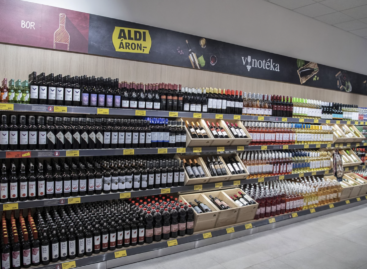GKI analysis: margin cap – a lifeline for customers, a shackle for the market
Based on the announcement of Minister Márton Nagy, in March 2025 the Hungarian government introduced a new measure, a margin freeze, on certain basic foodstuffs with the aim of curbing inflation. The essence of this is that the margin applied by retailers (the difference between the purchase and sale price) for the designated products may not exceed 10% or exceed the average margin in January 2023. The measure applies to 30 foodstuffs – including meat, dairy products, flour, sugar, oil – and affects larger retailers (with a turnover of over HUF 1 billion) from March 17, 2025 until May 31, for the time being.
 The government justified the introduction of the margin freeze with the stubbornly high level of food inflation: in February 2025, the annual food price increase in Hungary was still 7.1%. According to the cabinet’s expectations, a 10–15% decrease in the prices of the designated product group could reduce food inflation by up to 2 percentage points (Prime Minister Viktor Orbán spoke of “unreasonably high” retail margins – for example, 40% for eggs and over 80% for butter and sour cream – which they hope will reduce prices). However, when the measure was announced, experts indicated that the margin freeze was only a symptomatic treatment and raised numerous questions regarding its economic effects. Below, we review the short- and long-term economic impacts of the margin freeze – in particular on inflation, consumption, supply chains and retail – taking into account the experience of the Hungarian situation in March 2025 and the lessons of international comparison.
The government justified the introduction of the margin freeze with the stubbornly high level of food inflation: in February 2025, the annual food price increase in Hungary was still 7.1%. According to the cabinet’s expectations, a 10–15% decrease in the prices of the designated product group could reduce food inflation by up to 2 percentage points (Prime Minister Viktor Orbán spoke of “unreasonably high” retail margins – for example, 40% for eggs and over 80% for butter and sour cream – which they hope will reduce prices). However, when the measure was announced, experts indicated that the margin freeze was only a symptomatic treatment and raised numerous questions regarding its economic effects. Below, we review the short- and long-term economic impacts of the margin freeze – in particular on inflation, consumption, supply chains and retail – taking into account the experience of the Hungarian situation in March 2025 and the lessons of international comparison.
Short-term effects: temporary inflation reduction and increased purchasing power
In the short term, the direct impact of the margin freeze could be a decrease in the consumer price of the designated products. Since the retailer cannot add a profit margin of more than 10% to the cost price of these foods, the measure will result in a price decrease for products where they previously worked with higher margins. According to government data, the affected product basket accounts for ~6% of the total consumer basket, so a 10–15% reduction in the price of these products could reduce food inflation by approximately 2 percentage points. This could temporarily slow inflation and provide some relief to households by making essential food items cheaper. Furthermore, as consumers pay less for these items, their disposable income increases in the short term to purchase other products, which could stimulate consumption to a small extent.
However, the magnitude of these effects should not be overestimated. The margin freeze only applies to the 30 designated products, so it does not substantially reverse inflation as a whole, but only reduces it in a narrower range. Moreover, the decrease in prices is not automatic or uniform; according to market surveys, there were products whose prices decreased by more than 50% as a result of the measure, but there were also basic items for which the price hardly changed, and some even became more expensive. This suggests that where retailers were already operating with low margins (either due to competition or previous promotions), the margin stop will not result in a new price reduction, and in some cases the margin may even “creep up” from the lower margin at the beginning of the year to 10% (if it was below 10% in January, according to the regulation it cannot be higher than in January). Thus, it is possible that the price of certain products will increase slightly after the measure, if the supplier price has increased in the meantime, or the retailer is trying to reduce its previous losses. Overall, a mixed picture may emerge in the short term: a noticeable price drop for several products improves purchasing power, but in some cases unchanged prices or minimal price increases are experienced.
It is important to emphasize that the margin stop – compared to the previous fixed price stops – is a more market-conform, less distorting intervention. While in the previous price fixing, stores were forced to sell the price-stopped product below the purchase price (i.e. they suffered a loss on each item sold), the 10% maximum margin in principle provides some coverage for costs. The GKI points out that the margin stop is “a more market-friendly step than the price stop or mandatory sales”, as it does not lead to a loss in the sale of the designated products, and retailers do not become completely disinterested in distributing the given item. This can help the smooth running of the supply chain in the short term: stores will not have an interest in removing the affected products from the shelves (as we saw in some cases during the price stop).
Related news
This is how humans and AI work together – the artificial intelligence revolution in the workplace
🎧 Hallgasd a cikket: Lejátszás Szünet Folytatás Leállítás Nyelv: Auto…
Read more >This is how humans and AI work together – the artificial intelligence revolution in the workplace
🎧 Hallgasd a cikket: Lejátszás Szünet Folytatás Leállítás Nyelv: Auto…
Read more >Challenges of the retail sector: retail has become more crisis-resistant
🎧 Hallgasd a cikket: Lejátszás Szünet Folytatás Leállítás Nyelv: Auto…
Read more >Related news
Bread and wine for 399 forints, mulled wine for 450 forints: ALDI opens its own downtown Christmas market
🎧 Hallgasd a cikket: Lejátszás Szünet Folytatás Leállítás Nyelv: Auto…
Read more >MBH Analysis Center: Hungarian tourism is soaring – further growth is expected in the hotel market
🎧 Hallgasd a cikket: Lejátszás Szünet Folytatás Leállítás Nyelv: Auto…
Read more >It’s really worth coming together: Lidl and its customers make Christmas more beautiful for 2,000 disadvantaged children
🎧 Hallgasd a cikket: Lejátszás Szünet Folytatás Leállítás Nyelv: Auto…
Read more >






